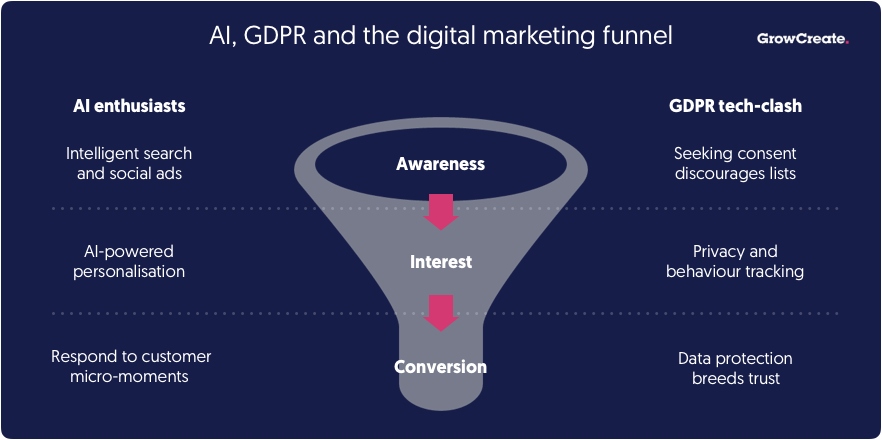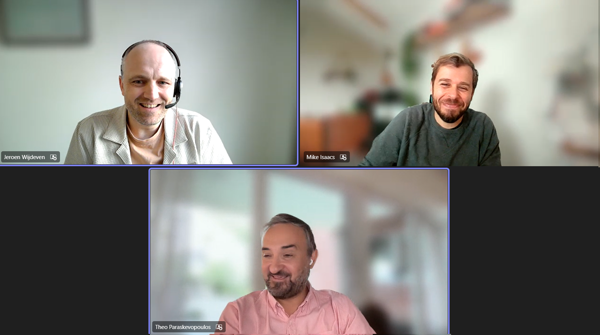Digital marketers tackle the opposing forces of AI and GDPR
DMEXCO, held annually in Cologne, is one of the biggest digital marketing conferences in the world, and one of the best places to get the pulse of the industry. In 2018, I found digital marketers caught between tech-excitement and tech-clash apprehension.
As in the Digital Assembly earlier this year, two subjects dominated discussion: the rise of Artificial Intelligence (AI) and GDPR, the EU privacy regulation which came into effect earlier this year. In what is probably the prevailing theme in 2018, the speed of technological development (personified by AI) and the subsequent tech-clash (personified by GDPR) have left the industry wondering what is an opportunity and what is a threat, across the funnel.

The view from the top
Start with generating awareness, the marketing activities operating at the top of the funnel. A core driver of GDPR is “thou shall not spam people”, so broad-brush lists should be as good as dead. Maybe not quite, but list-peddlers were confined to the sidelines, which shows that the industry may be finally growing out of these dodgy practices.
If GDPR threatens to disrupt the top of the funnel, AI presents an opportunity to overhaul it. Machine Learning has made display, social and search marketing a lot smarter, allowing marketers to connect with individuals that are genuinely interested in their product. Google, Facebook and Microsoft (represented by Bing and Linked In) had impressive stands - but new market entrants would be welcome.
Going through the middle
Technologies that power mid-funnel marketing (such as Content Management and Marketing Automation systems) made up the bulk of the exhibition. We are mostly familiar with Optimizely but competing platforms are AI-enthusiasts. At DMEXCO, marketers appeared cautiously excited about AI features (e.g. AI content and conversational interfaces), though the jury is still out.
The biggest fault-line is at the point where personalisation meets data protection. Clearly, using ML algorithms to personalise content is a very potent tool, with benefits to marketers and users alike. GDPR can be vague on this area, and most websites have responded with revamped cookie popups. We are keenly watching this space, and my hope is that we strike a reasonable compromise between privacy and AI-assisted personalisation.
The bottom line
At the bottom of the funnel are all the techniques used to encourage conversions, primarily found in Commerce and B2C, but also in B2B and account-based marketing. The focus at this stage is on gaining and retaining the customers’ trust, so GDPR and data protection is synonymous with best practice.
This layer has seen the biggest wave of innovation in Customer Experience (CX) solutions. In conversion optimisation, not only can we cater for individuals, but we can personalise to match their moods and micro-moments. But marketers be aware: a face-recognition display at DMEXCO split opinion between what is awesome and what is creepy.
What’s next
The twin and opposing forces of AI and GDPR are reshaping all three layers of the digital marketer's domain. At the top of the funnel, spam lists are giving way to more accurate targeting. In the middle, personalisation is making experiences more relevant but hasn’t quite won the day. At the bottom, capturing micro-moments needs to be balanced with trust.
All these trends are in line with Machine Learning’s place in the hype cycle. At DMEXCO 2019, I hope to see marketers decide that AI and data privacy are not mutually exclusive, but two sides of the same CX coin.





